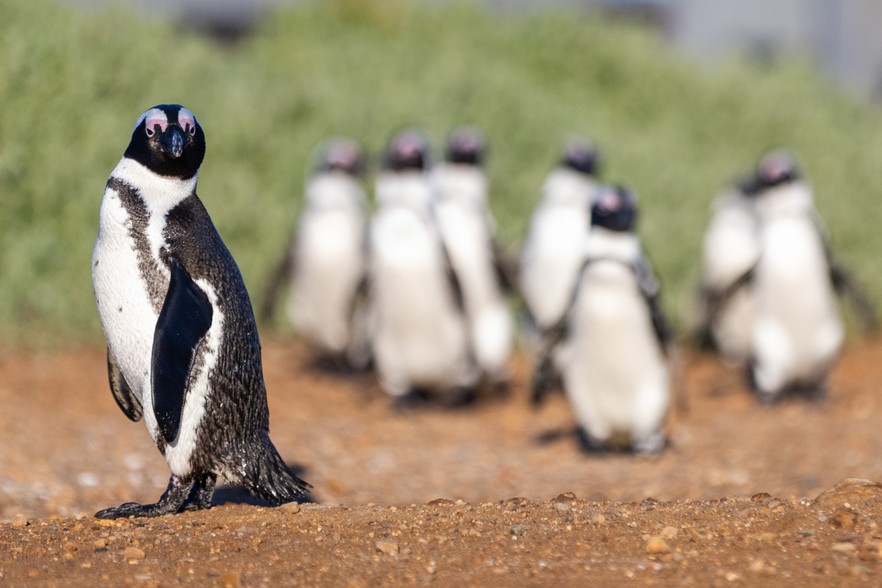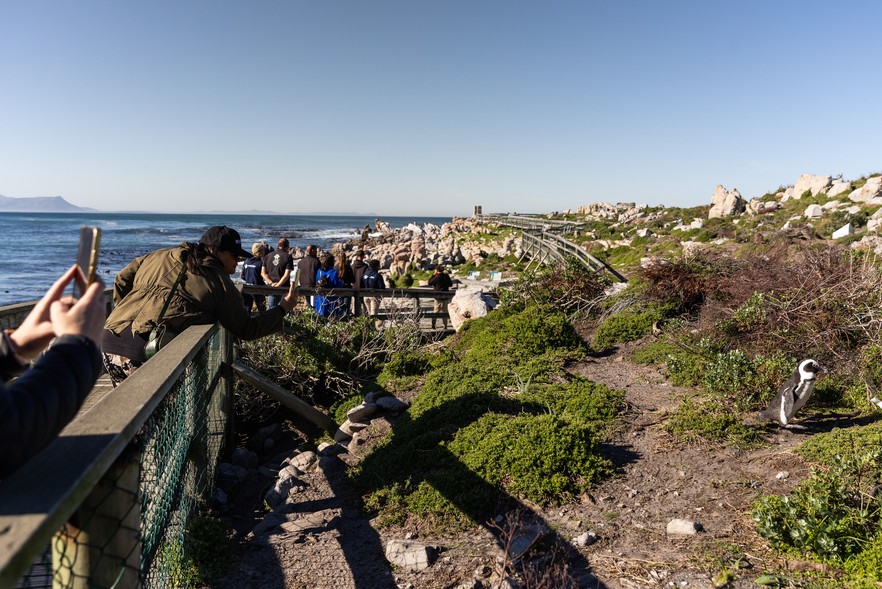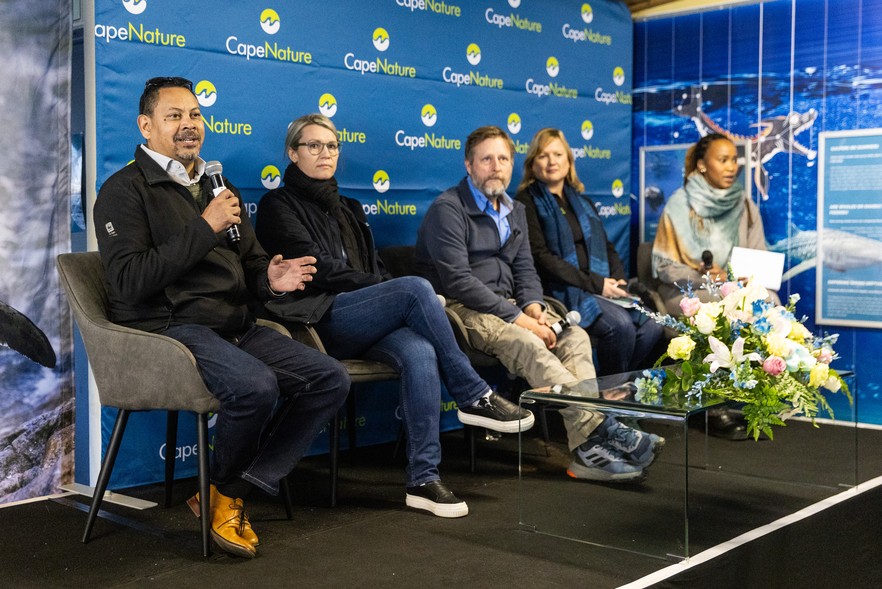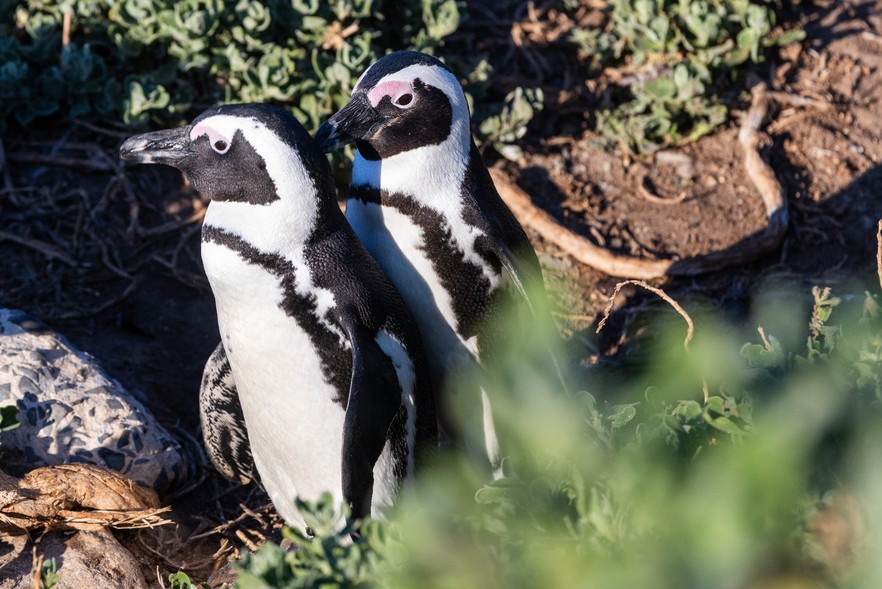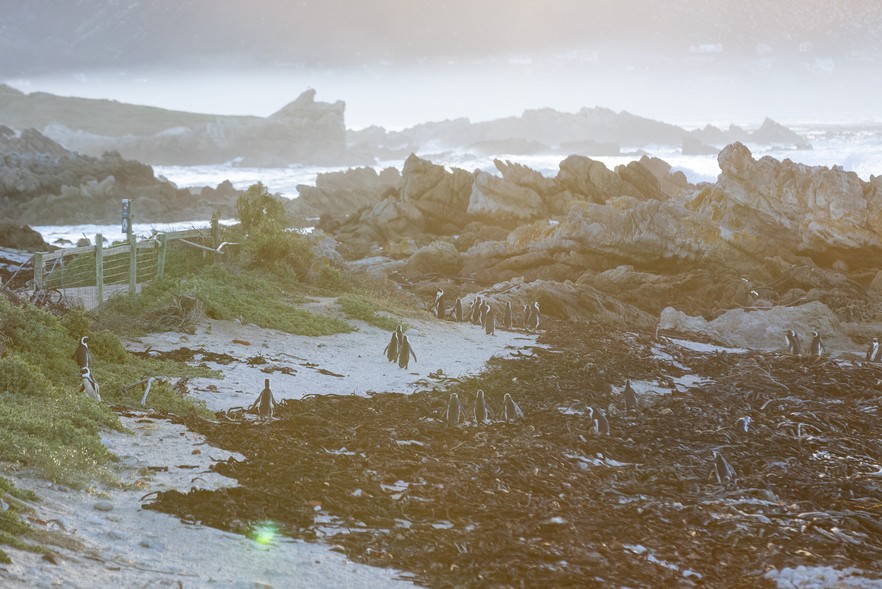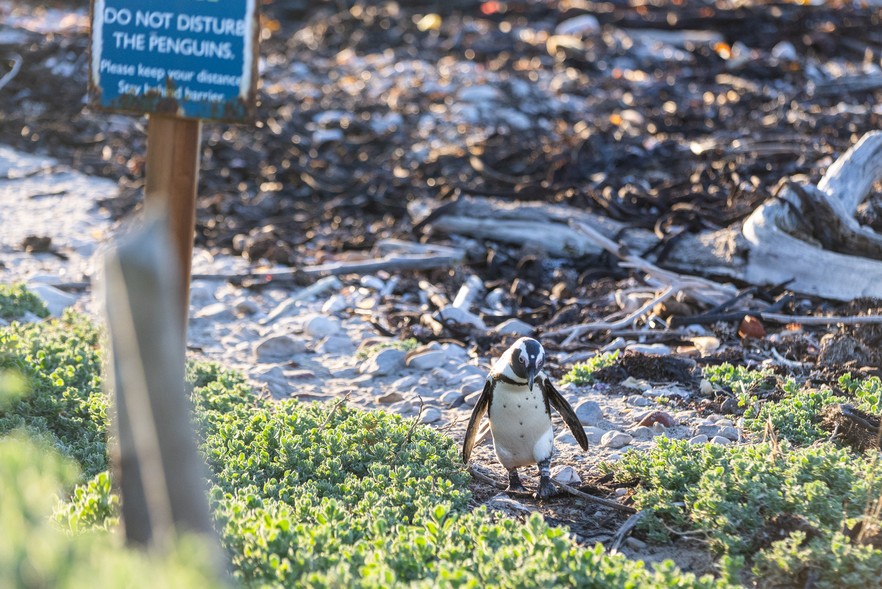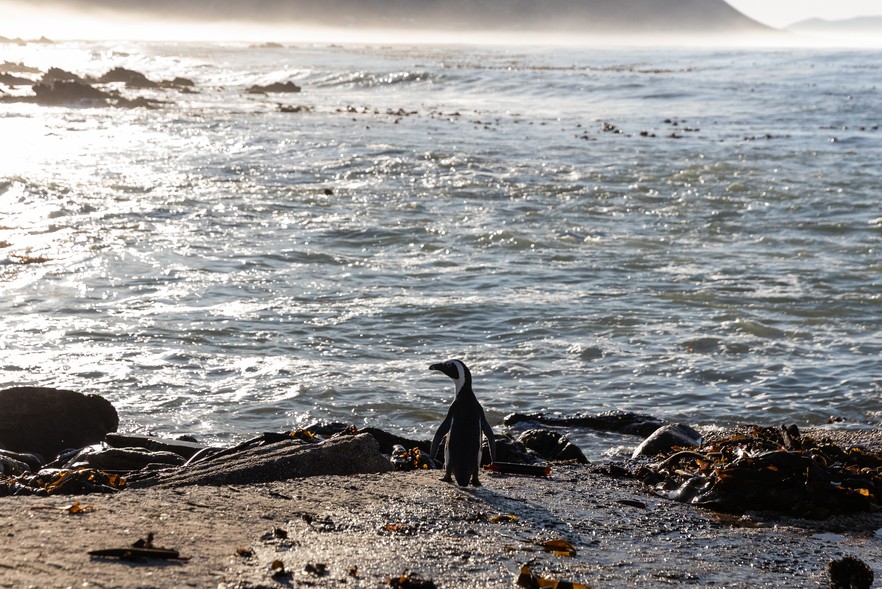In 10 years, there may be no more of these penguins
But protecting African Penguins’ food supply could reverse their decline, scientists say
The African Penguin is a major tourist attraction in South Africa. But their future is bleak.
- The African Penguin is critically endangered.
- At the current rate, they will be extinct in the wild by 2035, meaning there will be fewer than 50 breeding pairs left.
- This week conservation organisations hosted a discussion about the declining rates of the African Penguin on World Environment Day.
- The number of breeding pairs at Stony Point Nature Reserve in Betty’s Bay nearly halved between 2023 and 2024.
- There is hope: a recent court settlement protects the penguins’ fishing zones.
“People come from all over the world to look at our penguins. It is unthinkable how we can let the species go extinct,” says Craig Smith, Senior Marine Specialist at World Wide Fund for Nature South Africa (WWF-SA).
The African Penguin is critically endangered. At the current rate, they are forecasted to go extinct by 2035, meaning there will then be fewer than 50 breeding pairs are left.
On World Environment Day, 5 June, conservation organisations WWF-SA, the South African National Foundation for the Conservation of Coastal Birds (SANCCOB), BirdLife SA, and CapeNature hosted a discussion about the rapid decline of the African Penguin population at Stony Point Nature Reserve in Betty’s Bay.
Stony Point is home to a key African Penguin breeding colony but saw the number of breeding pairs nearly halve between 2023 and 2024. The colony is down to under 680 pairs. Stony Point is one of seven African Penguin colonies in South Africa. There are colonies in Namibia as well but most of the population is in South Africa.
Stony Point is one of seven African Penguin breeding colonies in South Africa. Only this and Boulders Beach in Simon’s Town are on the mainland. The other five are islands. There are also colonies in Namibia but most of the population is in South Africa.
The decline in population is largely linked to a shortage of food. The African Penguin’s main food sources are sardines and anchovies. They are increasingly having to compete with the commercial fishing industry. The number of fish in the ocean has declined significantly, with the lowest number of sardines in South African waters ever recorded in 2023.
“Penguins are an indicator species,” says Smith. “When penguins start declining, we get a sense of what happens in the ecosystem … We are seeing a downward trend of a number of species in our ecosystem.”
Alana Duffell-Canham, Conservation Intelligence manager at CapeNature, explained during the panel that the decline in breeding pairs is primarily because many of the penguins are choosing not to breed due to food shortages.
From left: Craig Smith (Senior Marine Specialist at WWF-SA), Nicky Stander (Head of Conservation at SANCCOB), Alistair McInnes (Seabird Conservation programme manager at Birdlife SA), Alana Duffell-Canham (Conservation Intelligence manager at CapeNature), and Claire Mawisa (moderator).
In March, conservation organisations BirdLife SA and SANCCOB reached a settlement with the Department of Forestry, Fisheries and the Environment (DFFE) and two pelagic fishing associations, after the conservation groups took the respondents to court. The out-of-court agreement expanded several key no-fishing zones around penguin colonies at St Croix Island, Dassen Island, Bird Island, Robben Island, Stony Point, and Dyer Island (see our report).
Smith commended the outcome of the court case but warned that it will be an ongoing battle. “We need to work with the government and the fishing industry to make fishing more sustainable,” he said.
Marcelin Barry, conservation monitor at WWF and Stony Point, comes from the coastal fishing town of Kleinmond. Barry says he has seen the decline of the African Penguins over the years. When they came to Stony Point in the past, they saw thousands of the black and white birds. “It’s sad to see the decline. For me, it’s about legacy. I also want my kids and grandchildren to see the penguins.”
Barry says they do patrols daily to find sick or injured penguins, which they catch and send to SANCCOB for rehabilitation.
A pair of penguins at Stoney Point.
Nicky Stander, head of Conservation at SANCCOB, explained that the organisation is currently “throwing every resource at the species”. This includes doing surgery and even blood transfusions where needed. But Stander said that bringing penguins into the hospital won’t “save the species”.
She added that it was futile to “put so much effort and resources” into hand-rearing chicks and releasing them into the wild “if there’s no food in the ecosystem”.
“It’s going to get to a point that it will be unethical to release birds into an environment that cannot sustain them.”
Stander said “collective effort” was needed to make sure there is enough food in the future. She said it was also important to focus on other threats to the African Penguin, such as predation and noise pollution from vessel traffic.
Stony Point sees lots of tourists but is well-controlled.
Alistair McInnes, Seabird Conservation programme manager at Birdlife SA, said they hoped the fish stocks would improve because of the no-fishing zones. But he said this would depend on “sustainable” fishing allocations and whether “exploitation rates allocated from the government are not excessive [and] drive down [fish] stocks again”.
Duffell-Canham said, “We absolutely cannot look at Stony Point in isolation.” She said they tracked a tagged male penguin that swam all the way up the border of Namibia. “They swim far and wide in search of food,” she said. But this also expends a lot of energy and makes them vulnerable to predation.
Disclosure: The two GroundUp journalists on this story were transported, accommodated and fed by WWF-SA and CapeNature for one night in the Kogelberg Nature Reserve.
Support independent journalism
Donate using Payfast

Don't miss out on the latest news
We respect your privacy, and promise we won't spam you.
Next: Postbank has yet to apply for a banking licence
Previous: Blind SA takes schools to court over conditions for children with disabilities
© 2025 GroundUp. This article is licensed under a Creative Commons Attribution-NoDerivatives 4.0 International License.
You may republish this article, so long as you credit the authors and GroundUp, and do not change the text. Please include a link back to the original article.
We put an invisible pixel in the article so that we can count traffic to republishers. All analytics tools are solely on our servers. We do not give our logs to any third party. Logs are deleted after two weeks. We do not use any IP address identifying information except to count regional traffic. We are solely interested in counting hits, not tracking users. If you republish, please do not delete the invisible pixel.

